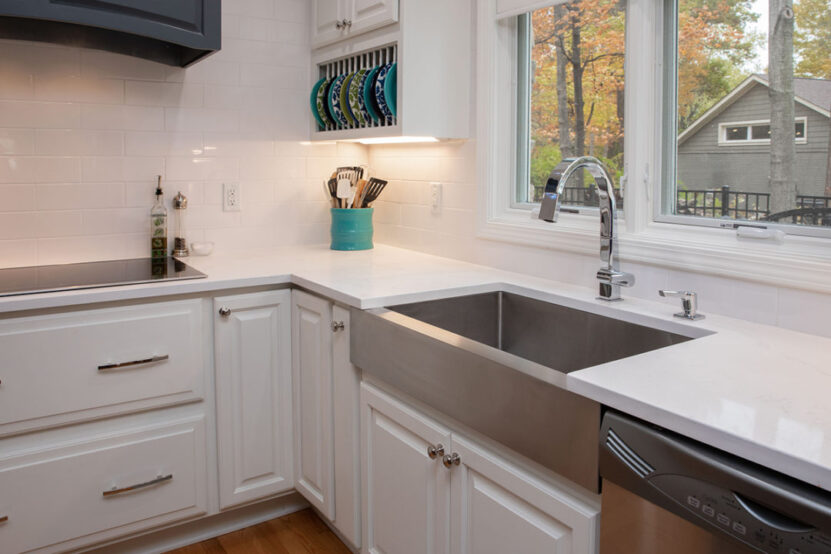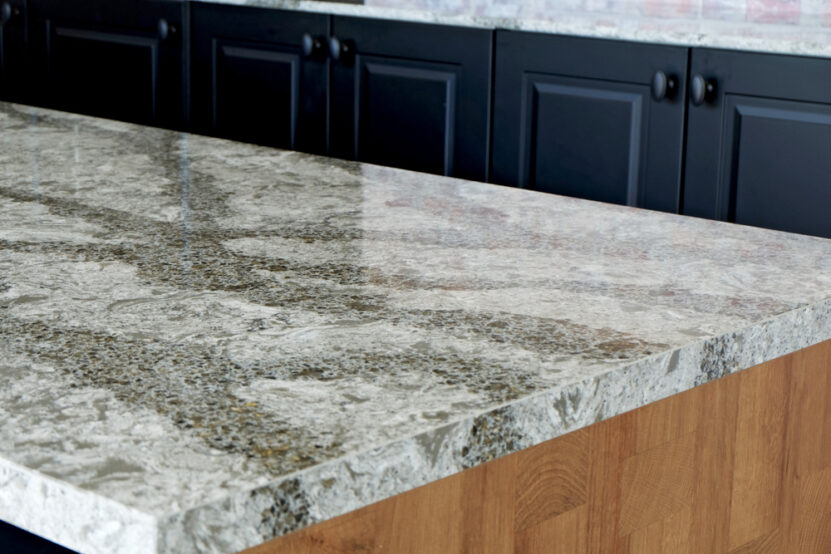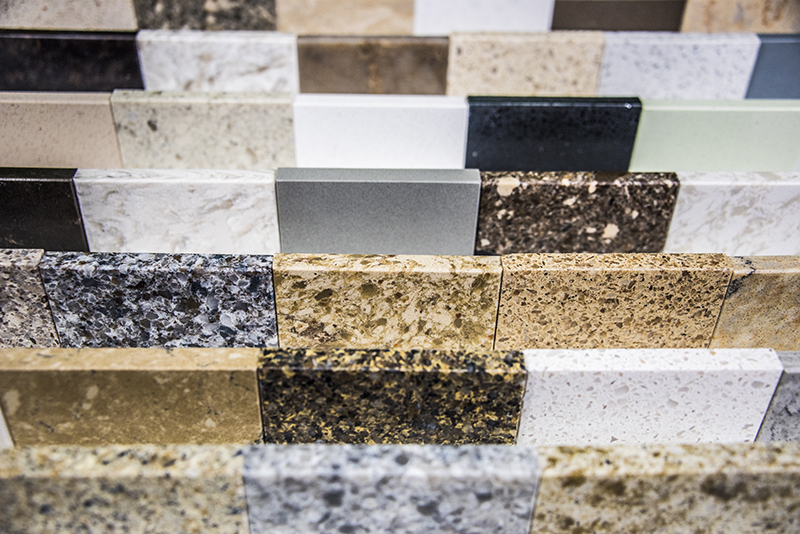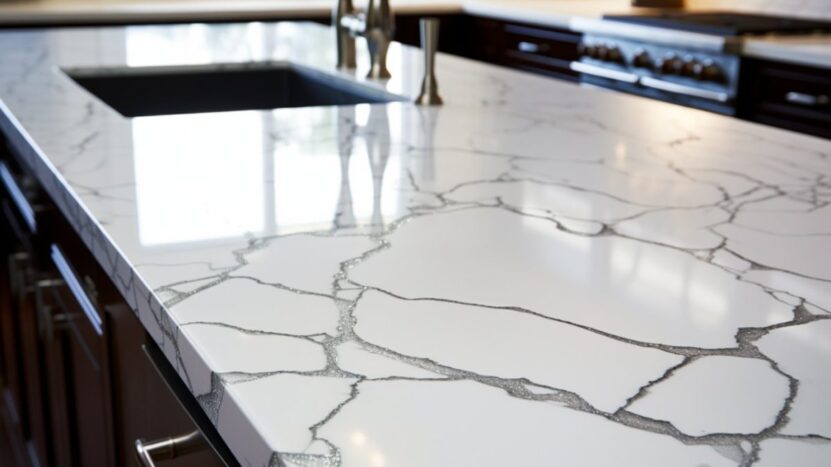In the heart of every home lies a surface that witnesses the dance of dinner preparations, the silent witnesses to morning coffees, and the quiet stand for late-night chats. The choice of this surface can elevate the everyday into a seamless blend of functionality and style. As we delve into the world of maintaining the beauty and resilience of one such choice, let’s explore how to cherish and preserve the heart of our homes.
Made from crushed quartz combined with pigments and resins, these countertops offer the look of natural stone with added durability and lower maintenance needs. Their non-porous surface resists staining and etching better than granite or marble. With proper care, quartz countertops can stay looking like new for many years.
Regular Cleaning and Maintenance
For day-to-day cleaning, quartz manufacturers recommend using a mild soap and water solution. Simply wipe down the countertop with soapy water using a soft cloth or sponge. Avoid abrasive cleaners or scrubbing pads, which could dull the surface over time.
While silica resists staining better than other natural types of stone, spills should still be wiped up quickly to prevent possible permanent staining. Oil-based spills in particular (like cooking oils or grease) need quick attention.
Preventing Damage

According to the people over at Bedrock Quartz, quartz countertops, sometimes referred to as engineered stone, have become an increasingly popular option for kitchen and bathroom remodels. This material is exceptionally durable, but the surface can become damaged if you don’t take proper care of it. Avoid exposing your counters to excessive pressure or impact that could chip or crack them, and do not place hot items from the stove or oven directly on the quartz. Always use a trivet or hot pad to prevent thermal shock.
Besides physical impacts, silica surfaces can also suffer chemical damage from certain substances. Avoid exposing the counters to things like paint removers, oven cleaners, drain cleaners, or very acidic substances. If these accidentally come into contact, wipe them away immediately and rinse thoroughly with water. This helps prevent possible discoloration or etching over time.
Addressing Stubborn Stains and Marks
Because of the non-porous nature of quartz, most spills can be wiped away easily if dealt with straight away. But what if a stubborn stain or mark gets left on the surface too long? Quartz is heat resistant, so you may try placing a cloth soaked in hot water over the stain to draw out the substance.
For tougher stains like dried food residue or grease, use a non-abrasive cleaner designed for stone countertops. Let it soak for 5-10 minutes before scrubbing gently with a soft cloth or brush. Avoid applying too much pressure, as excessive scrubbing could dull the finish. This technique of soaking followed by light scrubbing often works well for dried spills that have “baked on” over time.
If these methods don’t remove a stubborn mark, consult your countertop manufacturer or installer for the next steps. They may recommend trying a polishing kit or poultice specifically made for quartz surfaces. These can help lift stains without damaging the silica. As a last resort, professional refinishing or spot repair may become necessary if stains cannot be removed. But with prompt attention, most spills clean up easily.
Avoiding Heat Damage

One downside of quartz compared to some materials is its vulnerability to heat damage. While resistant to chips and cracks, the resins that bind silica together lose stability when subjected to excessive heat. So placing hot pans, irons, or other extremely hot objects directly on the surface can scorch, discolor, or even melt the quartz countertop. The damaged area takes on a glossy, melted sheen and becomes depressed.
To avoid this irreversible heat damage, always set hot items from the oven, stove, or grill onto a trivet or hot pad first. Never, ever place hot objects directly on quartz surfaces.
Proper Installation
The foundation of a quartz countertop’s durability and longevity lies in its proper installation. This process begins with meticulous substrate preparation, ensuring that the base is level and strong enough to support the quartz without any stress points that could lead to cracking.
Seam sealing is another critical consideration; it must be done carefully to prevent water infiltration and bacterial growth. Additionally, the choice of edge profiles not only contributes to the countertop’s aesthetic appeal but also its resistance to chipping and cracking. Attention to these details during installation can significantly extend the life of silica countertops, making them a worthwhile investment for any homeowner.
Color and Pattern Selection

Quartz countertops are available in an extensive array of colors and patterns, ranging from solid colors to replicas of natural stone. This variety allows homeowners to customize their spaces to their exact preferences. However, it’s important to note that certain colors and patterns may require specific care or maintenance practices.
For example, lighter colors might show stains more easily than darker ones, necessitating more frequent cleaning. Similarly, high-gloss finishes may require regular polishing to maintain their shine. Understanding these nuances can help homeowners choose a silica countertop that not only fits their aesthetic desires but also their lifestyle and maintenance capabilities.
Environmental Impact
The environmental impact of quartz countertops encompasses several aspects, from their manufacturing process to resource extraction and end-of-life disposal or recycling options. The production of quartz countertops typically involves the combination of natural silica with resins and pigments, which can have varying degrees of environmental footprints depending on the sourcing and manufacturing practices.
Additionally, the extraction of quartz must be managed responsibly to minimize ecological disruption. On the positive side, the durability of quartz countertops means they have a long lifespan, which can reduce the need for frequent replacements. Moreover, some companies offer recycling programs for silica countertops, contributing to a more sustainable lifecycle for the product.
Cost-Benefit Analysis
When considering quartz countertops, conducting a cost-benefit analysis in comparison to other materials is crucial. Quartz countertops often come with a higher initial investment than materials like laminate or tile.
However, their superior durability, low maintenance requirements, and resistance to staining and scratching can make them more cost-effective in the long run. Unlike natural stone, silica does not require periodic sealing, saving homeowners on maintenance costs. Additionally, the long-term value added to the home can often justify the upfront cost of quartz countertops, making them a smart choice for those looking to invest in their property’s value.
Warranty Coverage

Warranty coverage is an important factor to consider when purchasing quartz countertops. Many manufacturers and installers offer warranties that can cover manufacturing defects, staining, and cracking for several years post-installation.
It’s essential for homeowners to understand what their warranty covers, how to register for warranty protection, and what actions or neglect may void the warranty. This knowledge can provide peace of mind and ensure that homeowners are protected against potential issues with their countertops.
Educational Resources
Empowering homeowners with the knowledge and skills to properly maintain their quartz countertops is key to ensuring their longevity and beauty. A wealth of educational resources is available, including online tutorials, user manuals, and workshops offered by manufacturers and home improvement stores.
These resources can provide valuable tips on daily maintenance, stain removal, and minor repairs, helping homeowners to keep their silica countertops in pristine condition for years to come. By taking advantage of these educational materials, homeowners can confidently care for their countertops, preserving their investment and enjoying their beauty and functionality.
Conclusion

Taking proper precautions against both physical and heat impacts mean your quartz countertops will retain their flawless finish for many years of beauty and worry-free use. Following these best practices will help your silica countertops endure decades of gatherings around the kitchen island with family and friends.

